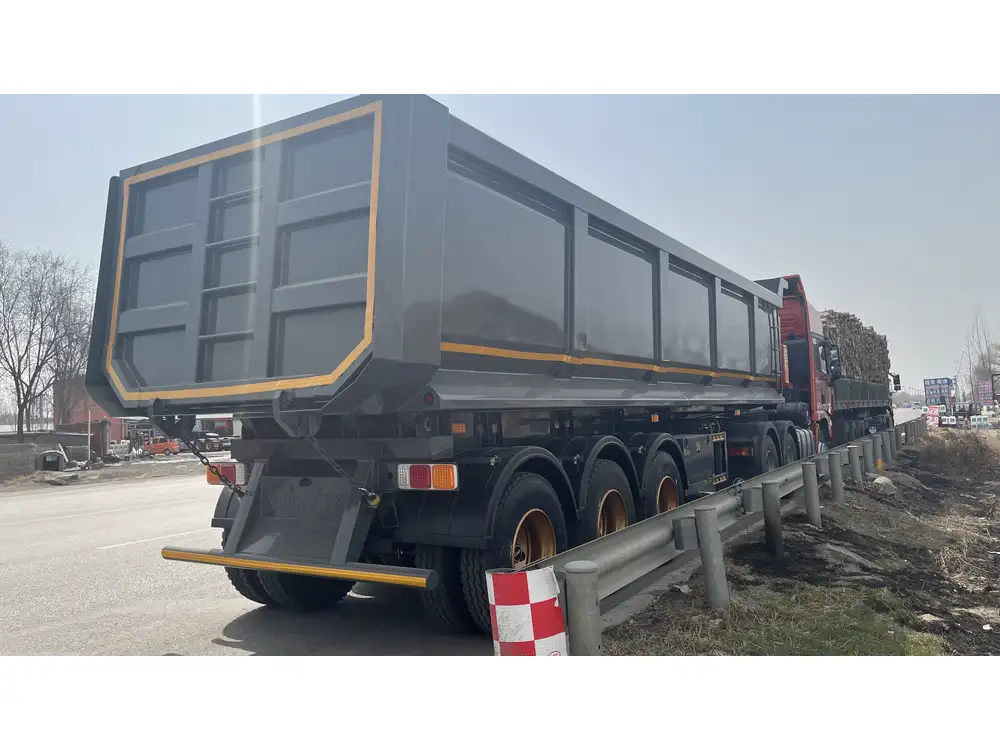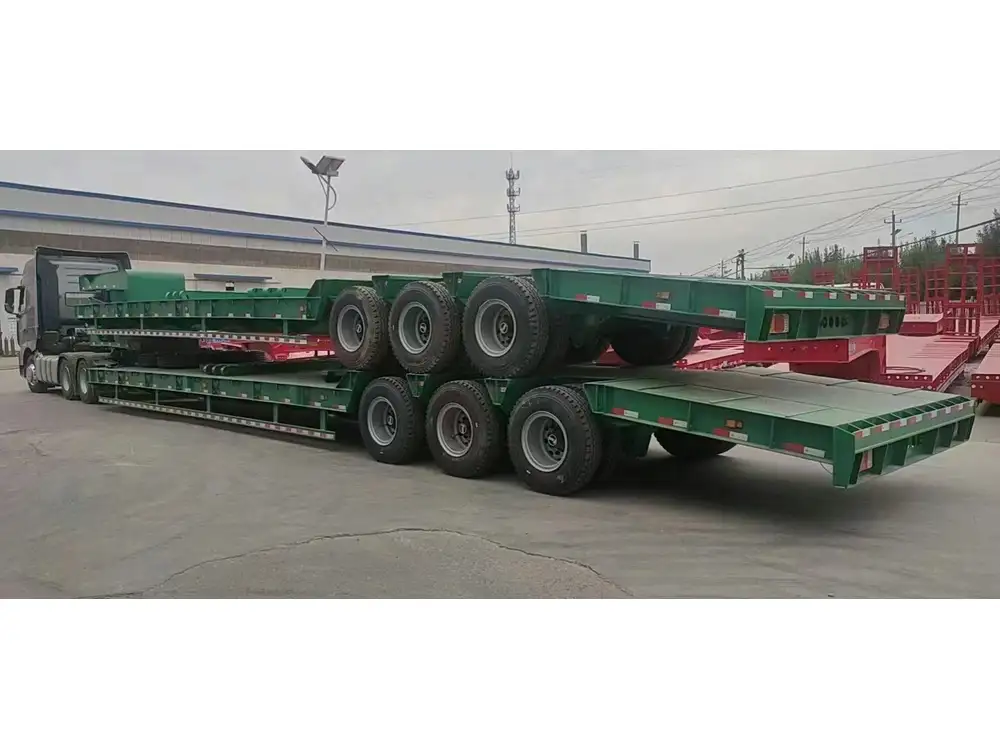Covering flatbed trailers is not only an essential aspect of transportation but also a critical procedure to preserve the integrity of the cargo being hauled. Whether you’re an individual carrier, a logistics manager, or operating within the manufacturing and transport sectors, understanding how to properly secure and cover flatbed trailers can save considerable time, resources, and potential losses. Below, we delve deep into the various methods, materials, and considerations involved in covering flatbed trailers efficiently.
Understanding Flatbed Trailers
Flatbed trailers are characterized by their lack of sides and roof, allowing for versatile loading of oversized, irregularly shaped cargo. However, this open design presents unique challenges, particularly concerning protection from the elements and potential shifting during transit. Thus, selecting appropriate covering methods can mitigate risks and enhance the safety of the materials transported.
Common Issues When Covering Flatbed Trailers
- Weather Conditions: Rain, wind, snow, and UV exposure can severely impact the cargo.
- Cargo Security: Movement during transit can cause damage to the load or the surrounding environment.
- Regulatory Compliance: Various states have regulations regarding the securement of loads; not adhering to these can lead to fines.

Materials for Covering Flatbed Trailers
Choosing the right material is crucial for effective coverage. Here’s a comparison of popular options:
| Material Type | Advantages | Disadvantages |
|---|---|---|
| Tarpaulins | – Lightweight – Easy to deploy – Cost-effective | – Limited durability against sharp objects |
| Cargo Nets | – Excellent for securing loose items – Allow air circulation | – Not waterproof – May require additional tarps |
| Hard Covers | – Maximum protection – Long-lasting | – Heavier and more expensive – Less flexible |
| Custom Fit Covers | – Tailored to specific loads – Ideal for specialized loads | – Higher cost – Longer lead time for production |
Choosing the Right Material
For weather-sensitive cargo, opting for tarpaulins or hard covers would be ideal. Conversely, for loads that require visibility or airflow, cargo nets can often be a better choice.
Methods of Covering Flatbed Trailers

1. Using Tarpaulins
Tarps are an industry favorite due to their lightweight yet durable nature. Here’s a step-by-step method for using tarpaulins effectively:
- Select the Right Size: Ensure the tarp is oversized by at least a foot on each side to provide sufficient coverage.
- Position the Tarp: Lay it over the cargo, ensuring complete coverage.
- Secure the Edges: Use bungee cords or tarp straps to fasten the tarp tightly, preventing flapping and potential tearing during transit.
2. Implementing Cargo Nets
Cargo nets serve as a second layer of security:
- Determine Net Size: Ensure the net is large enough to encompass the entire load.
- Position the Net: Lay the net over the load after applying a tarp.
- Secure the Net: Utilize ratchet straps to pull the net taut against the cargo, minimizing movement.
3. Hard Cover Options
While more expensive, hard covers provide unparalleled protection:
- Select an Appropriate Model: Choose a hard cover considering the type and height of your cargo.
- Installing the Cover: Follow manufacturer instructions for assembly and installation.
- Securing the Cover: Ensure all latches and seals are tight to avoid exposure during transport.

4. Custom Fit Covers
These are tailored for specific cargo types:
- Consult with Manufacturers: Provide details about the load dimensions and requirements for a custom design.
- Installation: Fit the custom cover over the load, ensuring it is taut and secured properly.
Regulations and Compliance
It is essential to be aware of the local and federal regulations surrounding flatbed cargo securing. For instance:
- FMCSA Regulations: The Federal Motor Carrier Safety Administration mandates that all cargo on flatbed trailers must be secured to prevent shifting during transit.
- State-Specific Laws: Variability exists among states; it’s crucial to check specific state regulations to avoid penalties.
Important Considerations
- Weight Distribution: Ensure that the load is evenly distributed to avoid tipping.
- Securement Points: Check and utilize all designated securement points on the trailer to maximize anchorage.

Safety Precautions When Covering Flatbed Trailers
Safety should always be a priority when covering flatbed trailers. Implement the following tips:
- Wear Proper Safety Gear: Gloves, hard hats, and safety glasses are vital when handling tarps and straps.
- Check Weather Conditions: Prior to loading, verify weather forecasts. If heavy winds or storms are expected, delay transport until conditions improve.
- Perform Routine Inspections: Regular checks on tarp integrity, securing methods, and cargo stability can prevent mishaps.
Best Practices Summary Table
| Practice | Description |
|---|---|
| Material Selection | Choose materials based on cargo type and conditions |
| Proper Installation | Follow systematic installation steps for coverage |
| Routine Inspections | Conduct checks pre-, during, and post-transport |
| Regulatory Compliance | Stay informed about regulations and secure loads accordingly |
Frequently Asked Questions (FAQs)

What is the best way to cover a flatbed trailer?
The optimal method combines using a heavy-duty tarp secured with bungee cords, further reinforced by cargo nets for added security against shifting.
How do you secure a tarpaulin on a flatbed trailer?
Position the tarp over the load, secure the corners tightly using tarp straps, and ensure no loose portions could catch the wind during transit.
Are there regulations regarding cargo securement?
Yes, federally mandated regulations exist, along with state-specific rules ensuring cargo is adequately secured on flatbed trailers.

What should I do if my cargo is blown off?
Immediately report any incidents to the authorities and assess the situation to ensure no injuries or further damages can occur.
Conclusion
Effectively covering flatbed trailers is foundational for safe transit and cargo preservation. By understanding the materials, methodologies, compliance requirements, and best practices outlined above, operators can significantly reduce the risks associated with transportation. This comprehensive guide serves as a valuable resource for anyone involved in the logistics and transportation industries, ensuring secure and efficient transport operations. Embrace these methods today and safeguard your cargo with confidence.



